







 |
||||||
 |
 |
 |
 |
 |
 |
 |
| Part V: Alice Springs |
|
Dad
and I took off fairly early to make our flight to
Alice, which went
by pretty quick. Alice Springs had been a dream
destination for
me, and I was so filled with anticipation, I could
hardly stand
it. After a slight mix-up with the rental car
reservation, we
were finally on our way! The drive to the town
paid off nicely,
as we spotted a couple central netted dragons and the
most beautiful
pygmy mulga monitor (Varanus gilleni) I have ever
seen. The
dragons dashed to a safe burrow retreat, but the
monitor held nice and
still for our photo session. What an amazing
welcome to the red
center! |
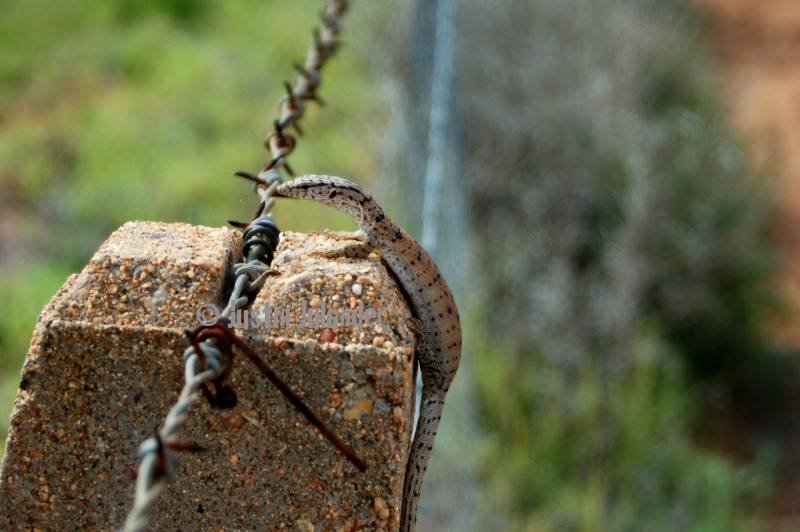 |
| Alice was a very personable town and I really feel like I could live there. With a forcast of rain over the first few days of our stay, and a dismal chance of finding reptiles, we decided we should head out towards Uluru for some touristy activity. We drove into the night, breifly stopping to spotlight for Centralian pythons (Morelia bredli) along the way. It was really windy and a bit cold, so no reptiles were out. We did find a furious budgie, who chattered at us whenever the light went near her tree, nesting in a tree hollow. Apparently the locals rarely see budgies in Alice area, but since the rains have been so prolific, they were everywhere. We drove as far as we could, and set up camp a ways off the road. Arising with first light, we headed off towards Uluru, stopping along the way to photograph various wildflowers and a large pair of wedge-tailed eagles. The rock was amazing in the early light. Shortly after entering the park, I was dismayed as we passed several amazing reptiles that were DOR, including western and centralian bluetongues (Tiliqua occipitalis and T. multifasciata, respectively), sand goannas (Varanus flavirufus), and thorny devils (Moloch horridus). DORs are heartbreaking, especially when they are such amazing species as these that I have wanted to see for as long as I can remember. The westerns were so amazing, I had to get a shot of one of the DORs. Tragically, I never did see any live Tiliqua or a Moloch in the wild. |
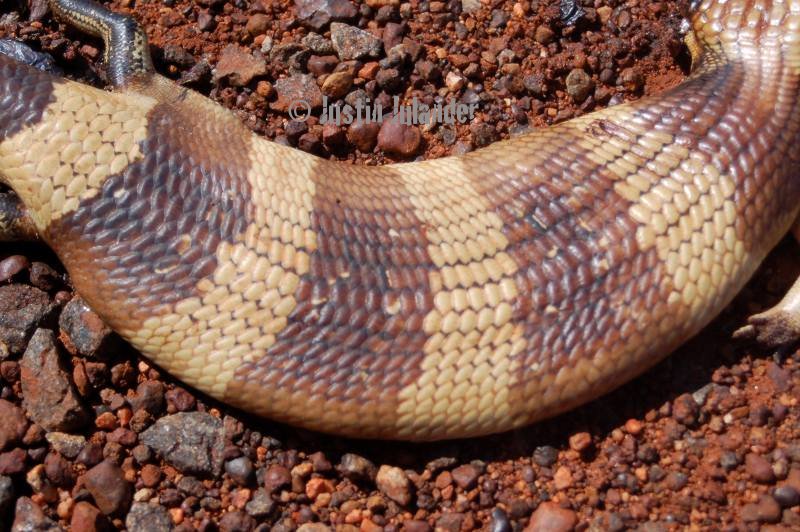 |
| The majority of the day was spent circumnavigating Uluru. I was fascinated with the amazing structure and makeup of this large monolith and could feel the history and spirit of the place, getting a nice understanding of why the Aboriginals consider this place so holy. The day was warm and sunny, and we took our time walking the base trail. Interestingly, no reptiles were out, despite the numerous road-kills around the area. One huge difference between this park and those in the US was the lack of roads and trails. Basically only one road around Uluru and one road to Kata-Tjuta make up the whole park, with 3-4 trails total. Shortly after we completed the loop, the storm clowds came rolling in, flashing lightning as they drew closer. The rain started to pour down, causing rushing waterfalls to spill off of Uluru. What a great sight, which few people have been lucky enough to see! We sat in awe and watched the water spill down the various basins and catches. What an incredible event to witness, and one I will not soon forget. I even got a shower in the downpour, which was very refreshing. We ate dinner under a thatch-roofed shelter, which soon started leaking like a sieve as the intensity of the rain increased. We had to eat quickly and were forced into the deluge on the long run from the picknick area back to the vehicle, in which we were thoroughly drenched. We headed out into the night towards Kata-Tjuta. Along the drive we spotted a few herps, that were likely escaping the water on the raised pavement or looking for a mate. These included western hooded scaly-foot (Pygopus nigriceps) and a bunch of Spencer's burrowing frogs (Opisthodon spenceri-not pictured). |
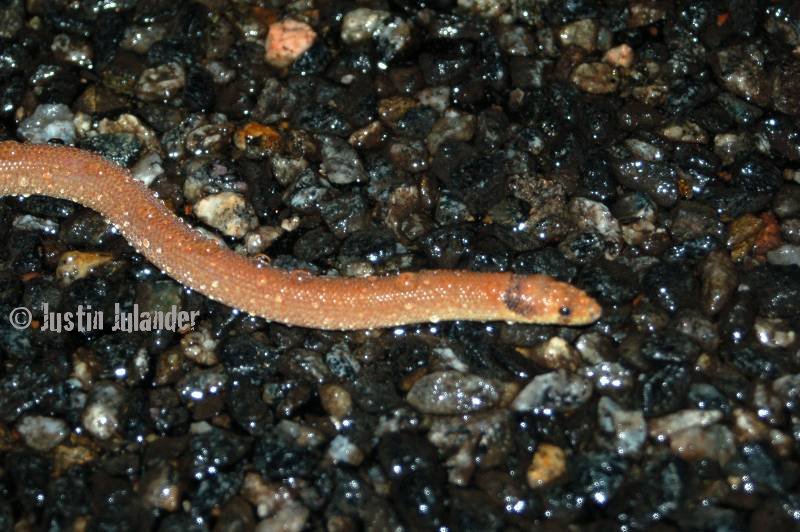 |
|
We
slept in the campground close to Kata Tjuta, and awoke
the following
morning to a magnificent site, the Olgas topped with a
thick fog.
It was a fairly dismal day weatherwise, which made
hiking among the
sandstone hills very enjoyable. Again, no herps,
aside from some
unidentified tadpoles, were seen. The
countryside was amazing,
although I felt a little gyped not being able to see
herps running
around during the day in the shadow of the monolithic
structures.
I guess this just means I'll have to go back.
After winding our
way through Kata Tjuta, we headed back along the road
towards
Uluru. There was a nice picturesque view of the
Olgas as we drove
away, so we pulled over to get some photographs.
I decided to
walk through the area with spinifex-dominated red sand
dunes. It
was perfect for herps, although the weather was not
cooperative.
I did find a nice Burton's legless sitting atop a
spinifex clump.
It was nicely speckled with reds and was the most
attractive Burton's
of the trip. Apparently, preditors had thought
so too, and he was
missing a large portion of his tail. I kept wandering through the spinfex clumps, when a flash of red and cream caught my eye as a small goanna ducked into a burrow. I got an OK look, but was not perfectly sure of the ID. Walking along one of the sand dunes, I happened apon a pair of the same species of monitor that I saw previously. This time the ID was sure, and I was fortunate enough to see 3 desert monitors (Varanus eremius)! As they realized they were not along, one ducked quickly under a spinifex bush, while the other took off across the dunes, with me trying my best to keep up. He zigzagged across the red sand just a little too quickly for pictures. He ducked under a spinifex and depsite my attempts to locate the monitor or the escape burrow, he made a clean getaway. I walked away high on my find, despite not having photographic evidence. Despite looking for more, I saw no other reptiles and shortly after seeing the monitors, the rain descended again, so we made our way for the car, covering our cameras as best we could. |
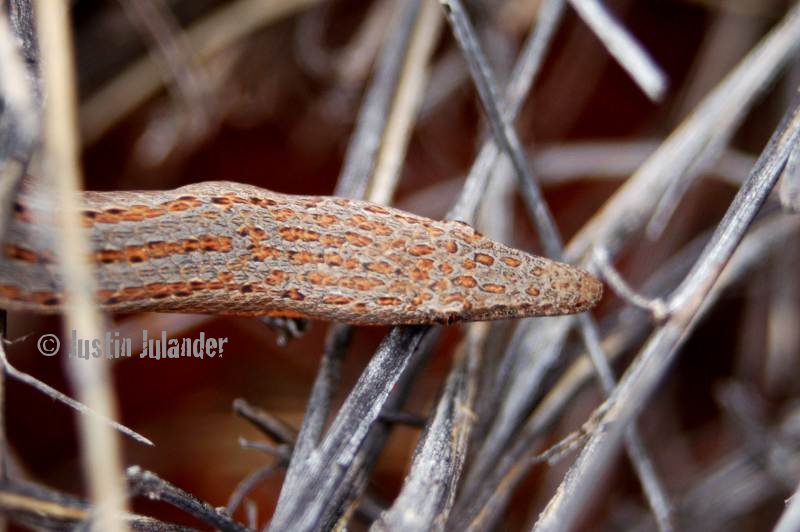 |
|
There was not much more to see in
the park,
and with more rain in the forecast we decided to head
over to Kings
Canyon/Watarrka National park. After seeing a
few DOR molochs and
flavis, we decided to check out some of the dunes
again. It was a
bit cold, and nothing was out, but we got a great view
and pictures of
the sunset and amazing clouds as we walked along
the dunes. After enjoying the sunset, it was back on the road for the long drive back and some herping on the way. First herp encountered as it got dark was a plethora of northern burrowing frogs (Neobatrachus aquilonius). Next up was one I had hoped I would find; a smooth knobtail gecko (Nephrurus levis levis)! It was a small male that was out on the sholder of the road. It was completely cool to find a levis out in the natural habitat, and it got me pumped for the remainder of the drive. I sat and watched him as he made his way off the road in short bursts. Great stuff! Next up was a small religeous snake, the monk snake (Suta monachus). It was beautiful red with a black head. It moved erratically off the road, as we coaxed it to safety. Luckily not many cars were on the road, so it was nice for road cruising and being able to flip around if something was spotted on the road. Waiting a few kms down the road was a nice fat-tailed gecko (Diplodactylus conspicillatus), which would turn out to be the most frequently encountered gecko in the Alice Springs area. Another gecko was next, a spiny-tailed gecko (Strophurus intermedius), a grey individual with darker charcoal markings. The row of spines on the tail are able to exude a sticky substance into the face of a preditor. These geckos moved very akwardly as it made it's way off the road. Fun to see another cool gecko in the wild. The road to Watarrka was productive. We found a pulloff campground and set up camp across from a loud group of travelers. The next morning, we headed towards Kings Canyon, and along the way saw a beautiful DOR narrow-banded shovel-nosed snake (Brachyurophis fasciolatus fasciatus), which would have been much better if it was AOR. |
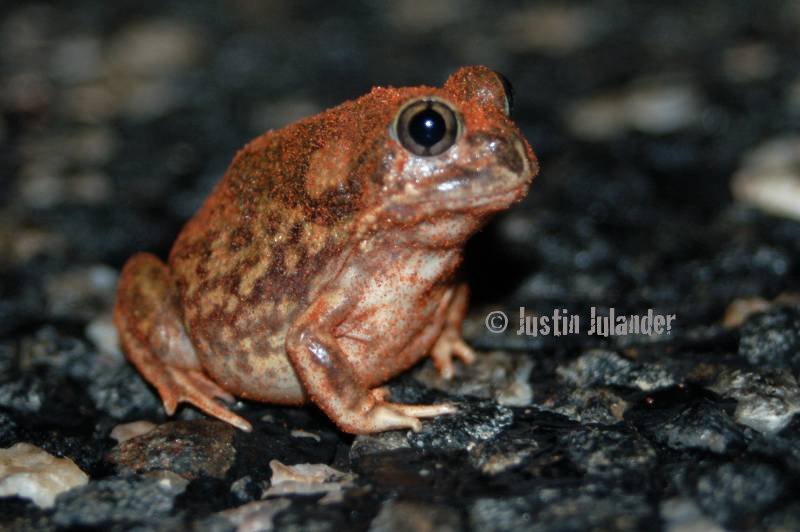 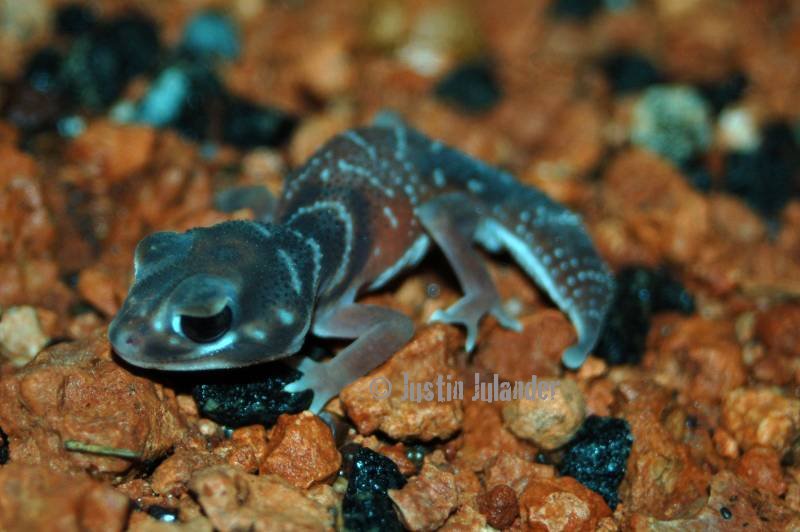 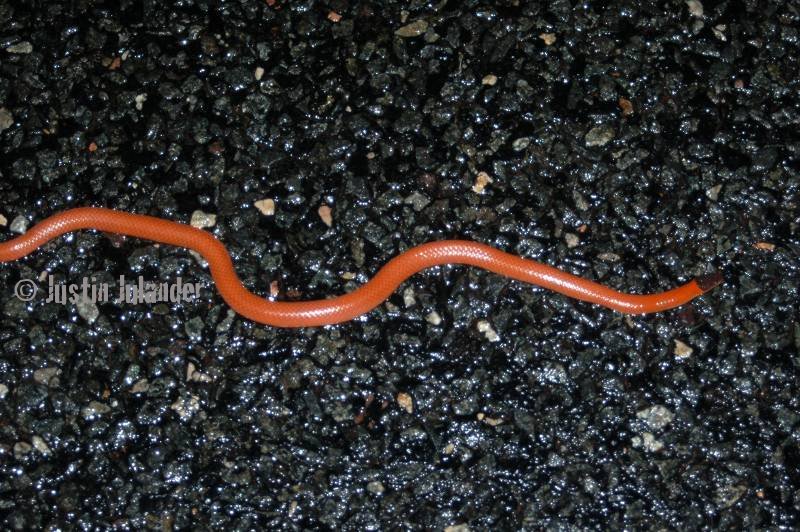 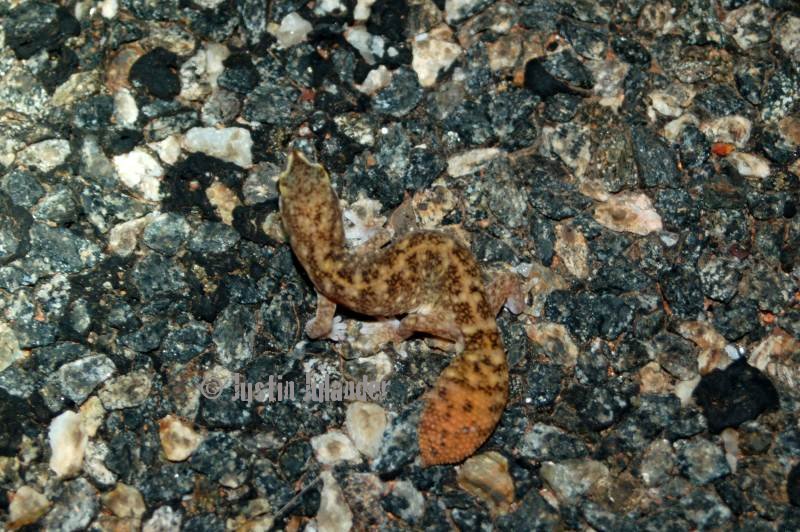 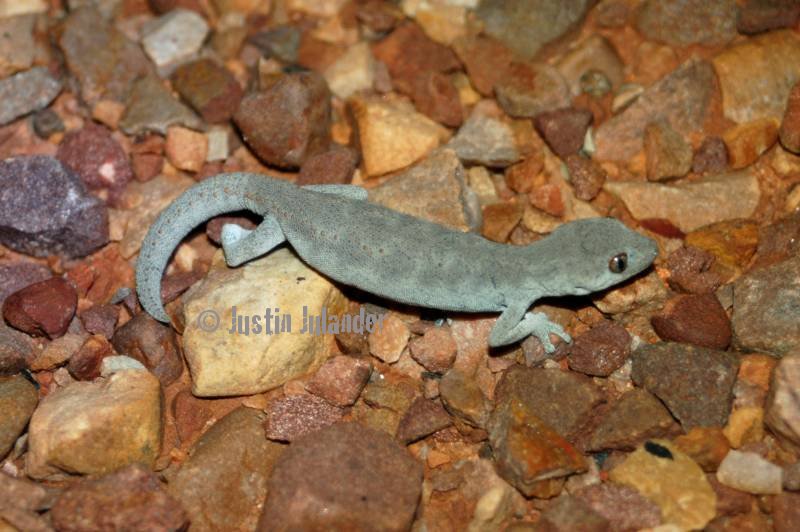 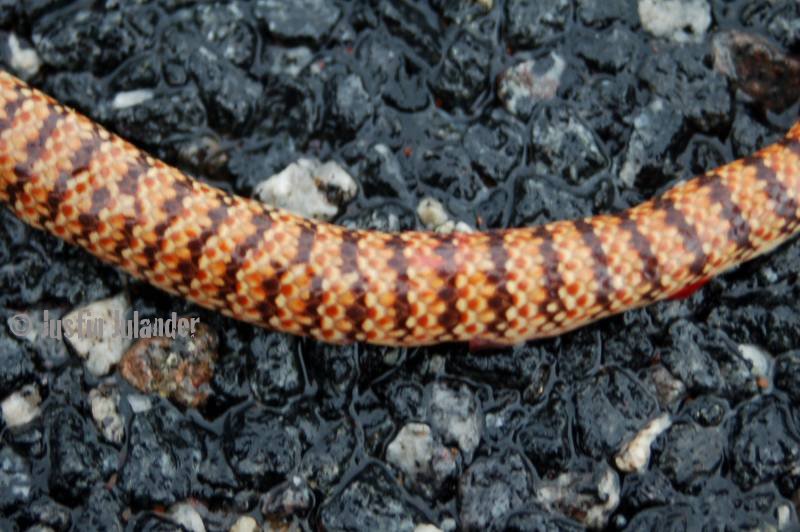 |
|
Kings
canyon was amazing. The waterfall was flowing,
which is a
rare event, so that was a nice bonus to the granduer
of the redrock
outcrops. We explored the canyon in relatively
nice weather,
although the only herps we saw were a couple of
leopard ctenotus (Ctenotus
patherinus), which quickly
retreated to the safety of their burrows. The
canyon was amazing,
and again as if on que, the rain started falling as we
finished the
loop trail. Such an amazing country! We
drove that night
back to Alice Springs and camped at Simpson Gap
campground for the
night. The next morning we headed to the Alice Springs Reptile center and checked out the collection there. We met Rex and Justin, who showed us around and told us about the area. The weather was looking really great, so we took off to go look for herps. Driving along the Larapinta Trail road, we kept an eye out for herps. It is always exciting when you are heading out into a new area with the potential of finding new and interesting species. I spotted my first bearded dragon (Pogona vitticeps) a few miles into the drive, which turned out to be the first of many. Taking pictures from a distance at first, I learned that some of the beardeds were quick to leap from their basking site into the brush below, while others, generally males, held their ground and would display to ward us off. It was a rush seeing a herp I have kept and bred in the wild. We even found one that had a severe spinal kink, but had survived into adulthood. I guess that argues against culling kinked babies in captivity. As we drove along stopping to check out the bearded dragons, I spotted a light brown snake on the side of the road. I hit the brakes and we sat there like deer in the headlights, which was enough time for the snake to dart off the road. We didn't even get any pictures as this liquid snake darted into the underbrush, but we knew it was a dangerous elapid, so there was a bit of tension chasing after it trying to get a picture of this amazing serpent. We later identified the snake as an eastern brown snake (Pseudonaja textilis, not pictured). The next herp spotting was completely lucky. As I was checking out a bearded dragon, one of the shy ones that ducked away shortly after I got out of the car, I noticed a spiny-tailed monitor (Varanus acanthurus) basking a couple rocks over. It even allowed me to approach pretty close before ducking under the rock into a burrow. This was another target species that I hoped to see, so I was really stoked after getting some amazing photos. That night we camped again in Simpsons Gap and spotlighted a bit for herps at night, only finding a desert trilling frog (Neobatrachus centralis, not pictured). Did I mention I love this country? |
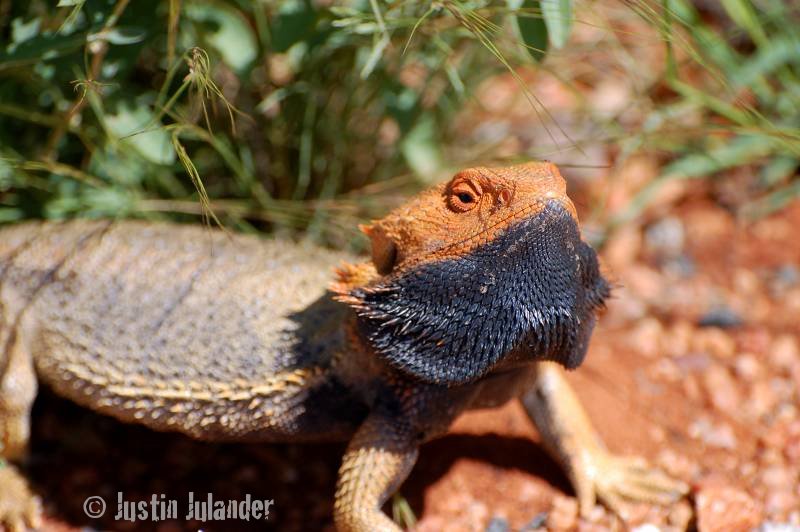 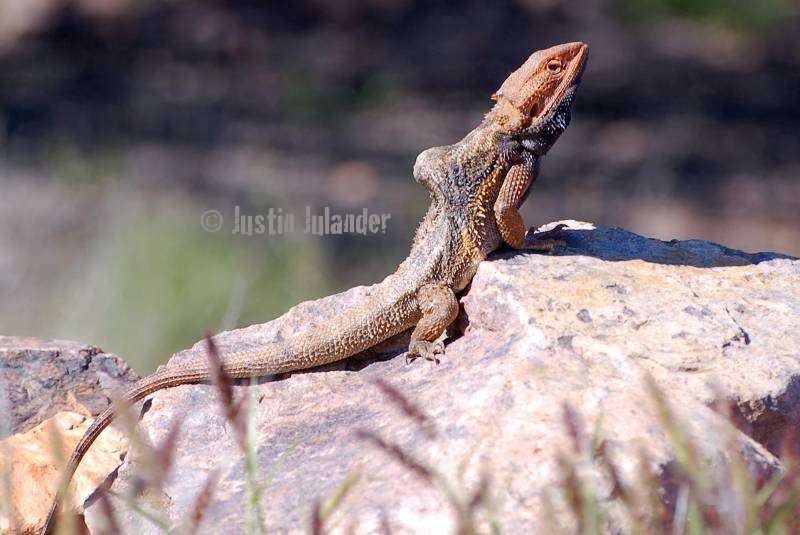 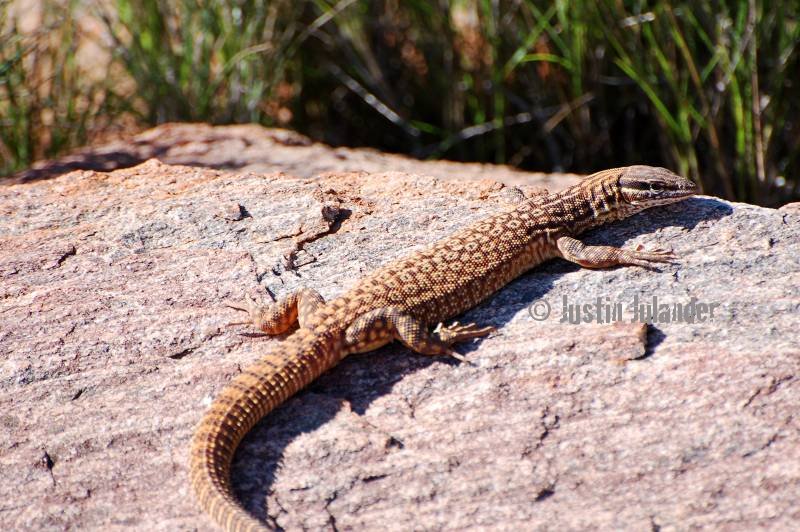 |
| Page 6,
More in Alice
Springs |